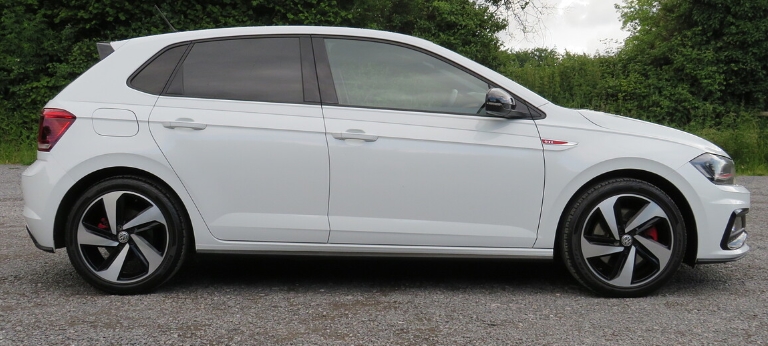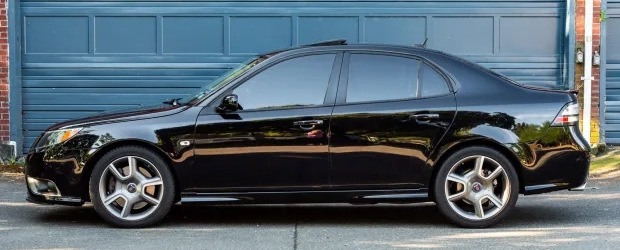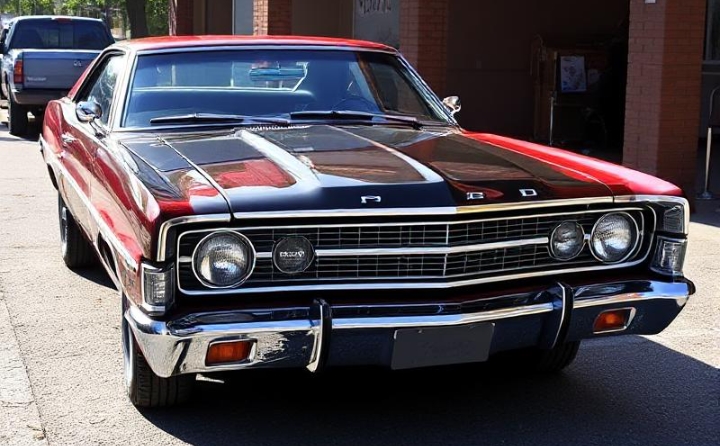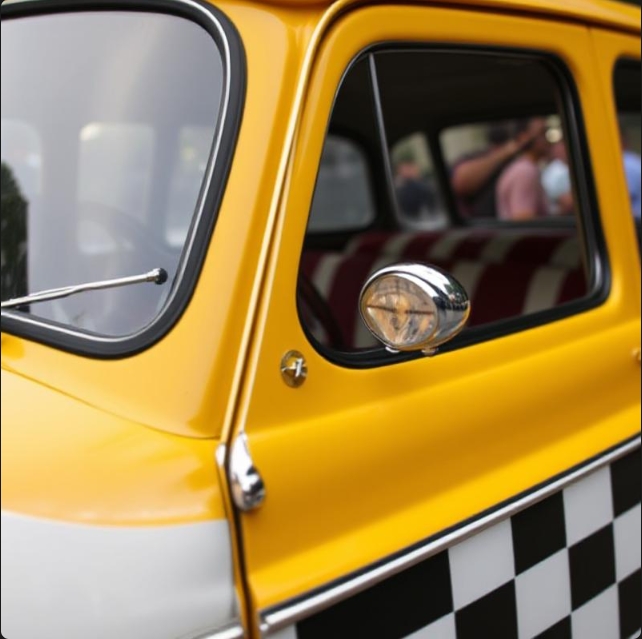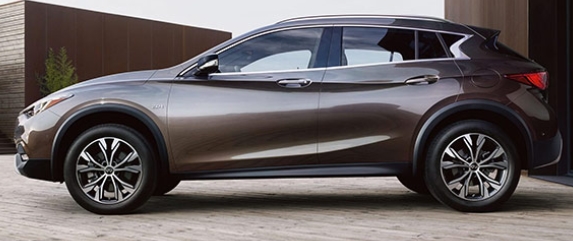The Little Giant: A Comprehensive History of the Volkswagen Polo
In the vast and competitive world of the automobile, few names carry the weight of legacy and consistency quite like the Volkswagen Polo. For nearly five decades, this archetypal supermini has served as the smaller, yet equally significant, sibling to the legendary Golf. It has evolved from a spartan, rebadged runabout into a sophisticated, technologically advanced vehicle that often blurs the lines into the class above. Its story is a mirror to the evolution of the modern small car, charting a course through changing tastes, technological revolutions, and economic shifts. This is the comprehensive history of the Volkswagen Polo.
The Beginning: Mark 1 (1975-1981)
The Polo’s story begins not as a Volkswagen, but as an Audi. In 1974, Audi launched the Audi 50, a modern front-wheel-drive, three-door hatchback designed by Bertone. Facing the 1970s oil crisis, Volkswagen needed an economical and efficient small car to slot beneath the newly launched Golf. Rather than developing a new car from scratch, they took the well-engineered Audi 50, simplified its specification, and rebranded it as the Volkswagen Polo.
Launched in 1975, the Polo Mk1 (Typ 86) was a masterclass in functional simplicity. It was offered exclusively as a three-door hatchback with a range of small, water-cooled four-cylinder petrol engines: a frugal 895cc producing 40 horsepower and a slightly more potent 1093cc with 50 hp.
A year later, in 1976, Volkswagen introduced a saloon version with a traditional boot, named the Volkswagen Derby. It was mechanically identical to the Polo but offered more practicality for families who preferred the three-box design.
Models and Trim Levels:
Body Styles: 3-door Hatchback, 2-door Saloon (Derby).
Trim Levels: The trim structure was straightforward, reflecting the car’s budget-oriented nature.
Base: The most spartan model, with minimal creature comforts.
L: Added slightly better interior trim and chrome detailing.
S / LS: Offered more equipment and often the larger engine.
GLS: The top-tier trim, with more luxurious appointments.
Sporting Model: The Polo GT, introduced in 1979, featured a 1272cc engine producing 60 hp, along with sportier styling cues like rev counters and unique decals.
In 1979, the Mk1 received a facelift, featuring plastic bumpers, a revised grille, and an updated dashboard. It was a successful first chapter, with the Polo establishing itself as a reliable and economical choice across Europe.
The Icon: Mark 2 & 2F (1981-1994)
The second generation, the Polo Mk2 (Typ 86C), arrived in 1981 and would go on to have an incredibly long and successful production run. It abandoned the traditional hatchback shape for a unique Kammback-style rear, often affectionately nicknamed the “breadvan” due to its steep, near-vertical rear window. This design provided excellent cargo space for its size.
Volkswagen diversified the range significantly with this generation. Alongside the breadvan hatchback, a two-door saloon version was again sold as the Polo Classic, and in 1982, a more stylish version with a sloping rear window, known as the Polo Coupé, was introduced to appeal to a younger, sportier demographic.
The Mk2 is most famous for introducing one of the most exciting performance models in supermini history. In 1986, Volkswagen unveiled the Polo G40 Coupé. At its heart was a 1.3-litre engine fitted with a small-scroll “G-Lader” supercharger, boosting power to an impressive 113 hp. In a car weighing just over 800kg, this provided exhilarating performance that could challenge much larger hot hatches.
In 1990, the Mk2 received a major facelift, often referred to as the Mk2F. This update was so extensive that it is sometimes considered a separate generation. The car featured modern, square headlights, larger bumpers, a completely redesigned interior, and significant improvements to its chassis and safety. The G40 made a return in the facelifted Coupé, solidifying its cult status.
Models and Trim Levels:
Body Styles: 3-door “Breadvan” Hatchback, 3-door Coupé, 2-door Saloon (Classic).
Trim Levels (varied by year and model):
C / Fox: Entry-level, often with very basic equipment.
CL (Comfort Lux): The mid-range volume seller, with better upholstery and more standard features.
GL (Grand Lux): A higher-spec model with velour trim and more convenience features.
GT: A sporty model with a 75 hp engine, sports seats, and red detailing, serving as a warm hatch below the G40.
Performance Model: G40, featuring the supercharged 1.3-litre engine.
Entering Modernity: Mark 3 & 3F (1994-2002)
The Polo Mk3 (Typ 6N), launched in 1994, was a quantum leap. It brought the Polo firmly into the modern era with a completely new, rounded bodyshell and a chassis based on a shortened version of the Golf Mk3’s floorpan. For the first time, a five-door hatchback was offered alongside the three-door, dramatically increasing its appeal to small families.
This generation also saw Volkswagen use platform sharing to expand the range. The Polo Classic (four-door saloon) and Polo Variant (five-door estate) were introduced in 1995, though these models were based on the SEAT Córdoba platform, sharing only front-end styling and powertrains with the hatchback.
A landmark moment came in 1998 with the introduction of the first-ever Polo GTI. Initially released as a limited edition in Germany, it featured a 1.6-litre 16-valve engine producing 120 hp, BBS alloy wheels, and a subtle but sporty body kit.
In late 1999, the Mk3 was heavily facelifted to become the Mk3F (Typ 6N2). It featured the distinctive twin-round “Lupo-style” headlights, a completely new interior with higher-quality materials reminiscent of the larger Passat, and improved safety features. The GTI was now a full production model, its power increased to 125 hp, cementing the Polo’s place in the hot hatch market. A notable special edition from this era was the Polo Harlequin, featuring multi-colored body panels as a marketing showcase.
Models and Trim Levels:
Body Styles: 3-door Hatchback, 5-door Hatchback, 4-door Saloon (Classic), 5-door Estate (Variant).
Trim Levels:
L: Base model.
CL: Mid-range.
GL / GLX: Higher specification models.
16V: A sporty model with a 1.4-litre 16-valve 100 hp engine.
Performance Model: GTI, with a 1.6-litre 16-valve engine.
A Touch of Class: Mark 4 (2002-2009)
The Polo Mk4 (Typ 9N), launched in 2002, represented another major step up in perceived quality and refinement. Built on a new platform shared with the Škoda Fabia and SEAT Ibiza, it was larger and heavier than its predecessor, with a build quality that rivalled cars from the class above. Its most distinctive design feature was its quad-round headlamps, earning it the “four-eyed” nickname.
The model range included three and five-door hatchbacks and a four-door saloon. This generation also introduced the rugged, off-road-styled Polo Dune (later named CrossPolo), which featured raised suspension and protective plastic body cladding.
A significant facelift in 2005, the Mk4F (Typ 9N3), dramatically changed the car’s appearance. The quad headlamps were replaced with sleek, single-piece units that resembled those on the Passat, giving the car a much cleaner and more contemporary look.
This facelifted generation brought back the GTI badge in a big way. It was now powered by Volkswagen’s venerable 1.8-litre turbocharged 20-valve engine, producing 150 hp (and later 180 hp in the GTI Cup Edition). For the first time, a performance diesel was also offered: the Polo GT TDI, using a 1.9-litre TDI engine with 130 hp and immense torque, creating a unique and formidable diesel hot hatch.
Models and Trim Levels:
Body Styles: 3-door Hatchback, 5-door Hatchback, 4-door Saloon.
Trim Levels:
E / S: Entry-level trims.
SE: The popular mid-range choice.
Sport: Featured stiffer suspension, alloy wheels, and sports seats.
Special Models: Dune / CrossPolo (crossover style).
Performance Models: GTI (1.8T petrol), GT TDI (1.9 TDI diesel).
The Benchmark: Mark 5 (2009-2017)
When the Polo Mk5 (Typ 6R) was unveiled in 2009, it was immediately hailed as a class leader, winning the 2010 European Car of the Year award. Its sharp, clean design, penned by Walter de Silva, aligned it perfectly with the contemporary VW family look established by the Golf Mk6. The interior quality was exceptional, setting a new benchmark for the supermini segment.
This generation introduced modern Volkswagen technologies to the Polo, including efficient TSI turbocharged petrol engines and smooth DSG dual-clutch automatic gearboxes. The focus on efficiency was highlighted by the BlueMotion models, which used aerodynamic tweaks and optimised engine tuning to achieve remarkable fuel economy.
The GTI model returned, initially with a sophisticated but complex 1.4-litre “twin-charger” engine (both supercharged and turbocharged) producing 180 hp.
A 2014 facelift, the Mk5F (Typ 6C), brought subtle exterior styling changes but significant technological upgrades. It introduced a new range of Euro 6 compliant engines, most notably the 1.0-litre three-cylinder TSI. Inside, it received a modern touchscreen infotainment system and advanced safety features like post-collision braking. The facelifted GTI ditched the twin-charger for a more robust 1.8-litre TSI engine producing 192 hp, now available with a manual gearbox for the first time in this generation.
Models and Trim Levels:
Body Styles: 3-door Hatchback, 5-door Hatchback.
Trim Levels:
S / SE: Standard models offering good value.
Match: A popular special edition that bundled desirable options like alloy wheels and air conditioning.
SEL: A high-spec luxury-oriented trim.
R-Line: Offered sporty styling inspired by the GTI.
Efficiency Model: BlueMotion.
Performance Model: GTI (1.4 TSI twin-charger, later 1.8 TSI).
The Digital Native: Mark 6 (2017-Present)
The current Polo Mk6 (Typ AW), launched in 2017, marked the car’s most profound transformation. It moved onto Volkswagen’s highly flexible MQB A0 platform, a move that made the Polo significantly larger—longer and wider than its predecessor, with a wheelbase comparable to the Golf Mk4. This growth translated into a much more spacious cabin and a larger boot, truly pushing the boundaries of the supermini class. Reflecting market trends, the three-door body style was discontinued for the first time.
The Mk6 ushered the Polo into the digital age. It was available with Volkswagen’s Active Info Display (a fully digital instrument cluster) and large glass-fronted infotainment systems. A full suite of driver-assistance systems, previously reserved for larger cars, became available.
The GTI model received another major upgrade, now powered by a 2.0-litre TSI engine derived from the Golf GTI, producing 200 hp (later updated to 207 hp). This gave the Polo GTI genuine junior hot hatch credentials.
A comprehensive facelift in 2021 modernised the exterior with new bumpers and standard LED lighting, including an optional light bar in the grille and advanced IQ.Light matrix LED headlights. The interior technology was further enhanced with updated infotainment and more standard digital instruments.
Models and Trim Levels:
Body Style: 5-door Hatchback.
Trim Levels (current UK market example):
Life: The well-equipped entry-level model.
Style: Adds more comfort and convenience features, including matrix LED headlights.
R-Line: The top-tier non-GTI model with aggressive R-Line styling.
Special Models: Beats (featuring an upgraded sound system).
Performance Model: GTI (2.0 TSI).
.

.
An Enduring Legacy
From its humble origins as a rebadged Audi, the Volkswagen Polo has crafted a remarkable identity of its own. It has consistently evolved to meet the demands of each new decade, transforming from a simple tool for economical transport into a sophisticated, desirable, and technologically rich vehicle. Through six distinct generations, it has remained a benchmark for quality, refinement, and usability in the supermini class. The story of the Polo is not just the story of a car; it is the story of how the small car grew up.
